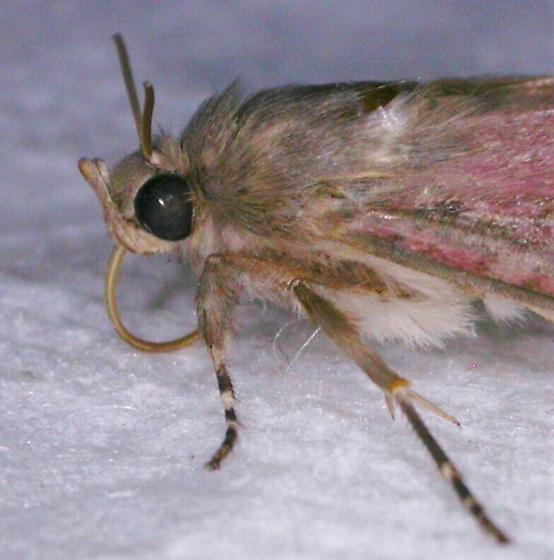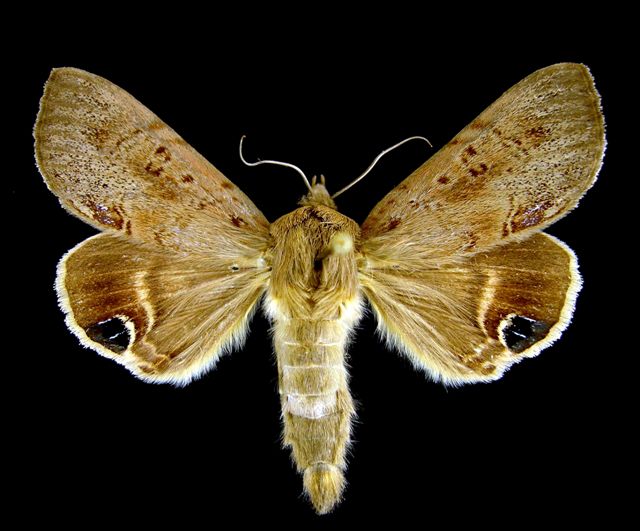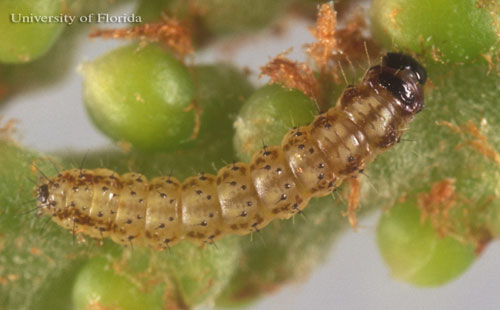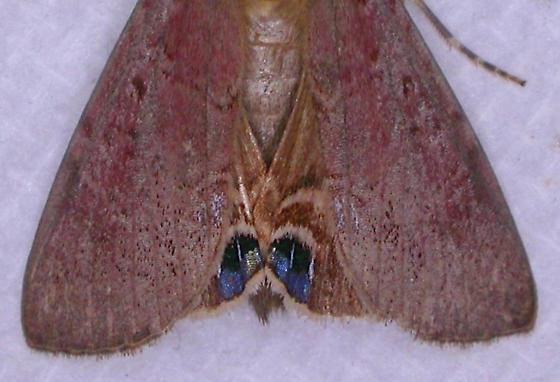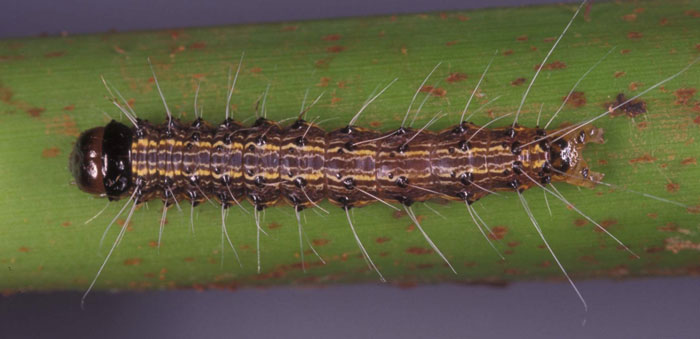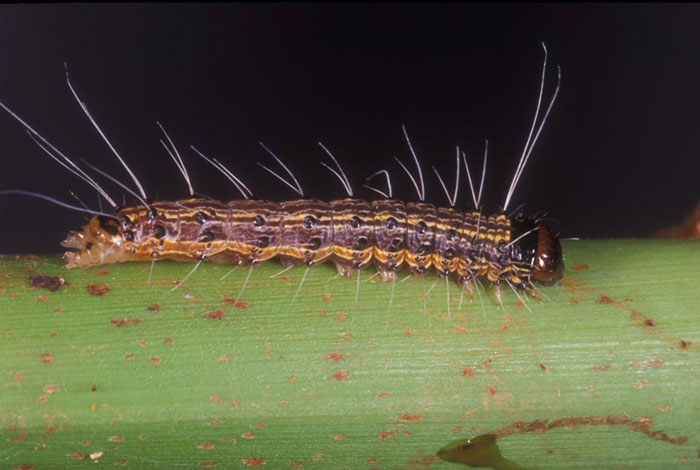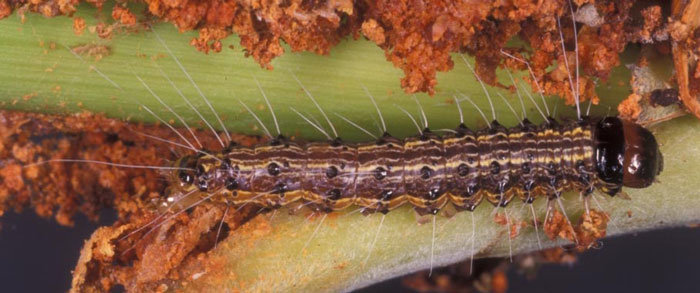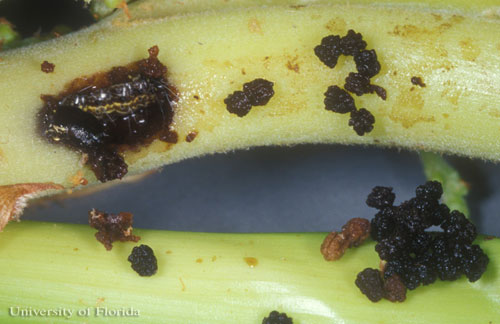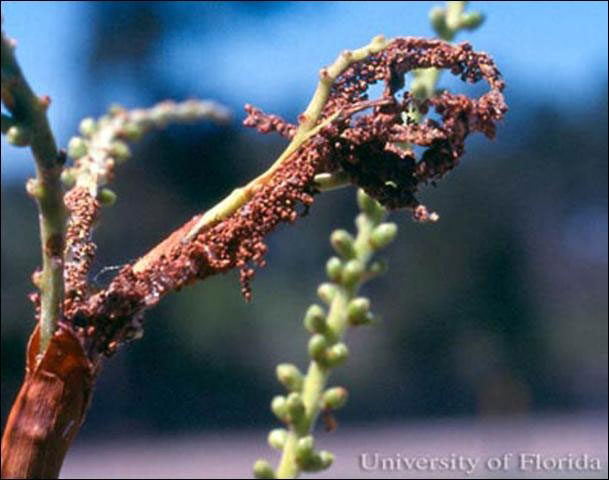Cabbage Palm Caterpillar
|
adult head; Photo © Jeff Hollenbeck |
|
adult; Photo © Jim Vargo, Mississippi State University |
|
early instar larva; Photo by Lyle Buss, © University of Florida |
|
adult wings; Photo © Jeff Hollenbeck |
|
larva, dorsal view; Photo by Lyle Buss, University of Florida |
|
larva; Photo by Lyle Buss, University of Florida |
|
larva with frass; Photo by Lyle Buss, University of Florida |
|
cabbage palm caterpillar damage in flower stalk (frass removed to show hole with caterpillar inside); Photo by Lyle Buss, © University of Florida |
|
webbed frass shelter of cabbage palm caterpillar on bloom spike of palm; Photo by Lyle Buss, © University of Florida |
Scientific name
Litoprosopus futilis (Grote & Robinson)
Family
Noctuidae
Synonyms
Dyops futilis Grote & Robinson
Description
Adults: Wingspan 5 cm; body and forewing color gray and brown; hindwing with dark eyespot about 5 mm in diameter, each eye spot with white linear dashes.
Larvae: Length 3.8 cm; head and cervical shield shiny black; body color taffy with pinkish stripes and covered with black spines; bases of setae ringed with white. Larvae becomes pink just before pupating.
Diagnostic features
Adult: Dark eyespot is found on each hindwing. Within each eye spot are two approximately parallel white linear dashes.
Larvae: Color black with pink stripes and long white setae; bases of setae are ringed with white.
Distribution
United States (North Carolina to Florida, west to Texas).
Hosts
Palms are the only known host, including the genera Sabal, Serenoa, and Washingtonia.
Additional comments
The caterpillar can usually be found when palms are initiating their flowering spikes. They may be found deep within these developing flower spikes.


